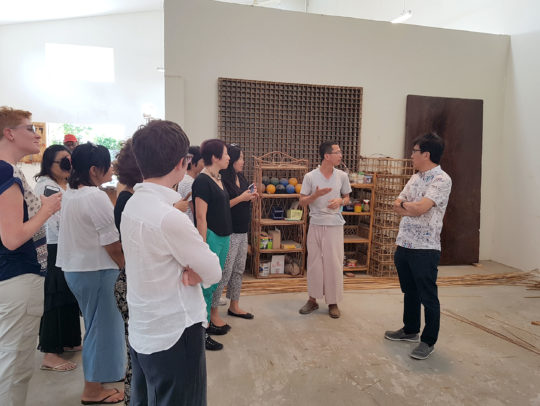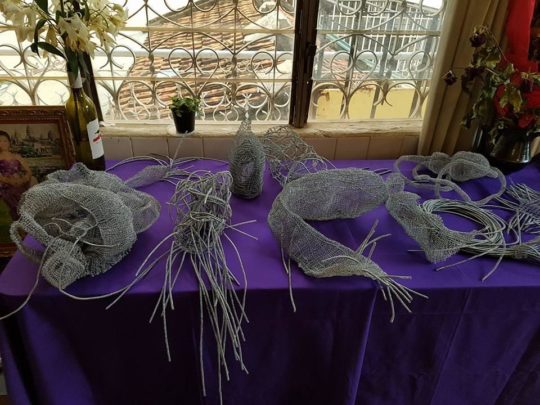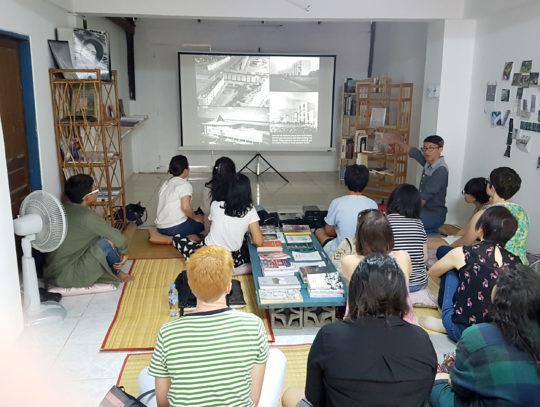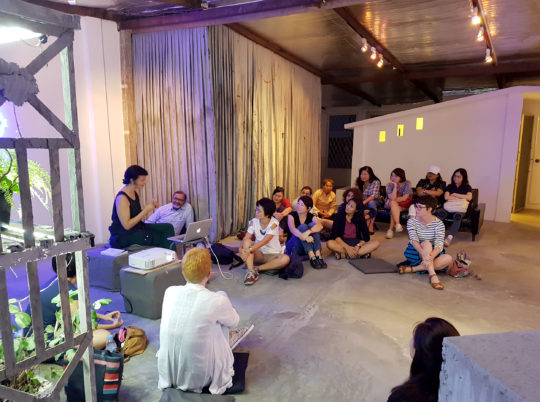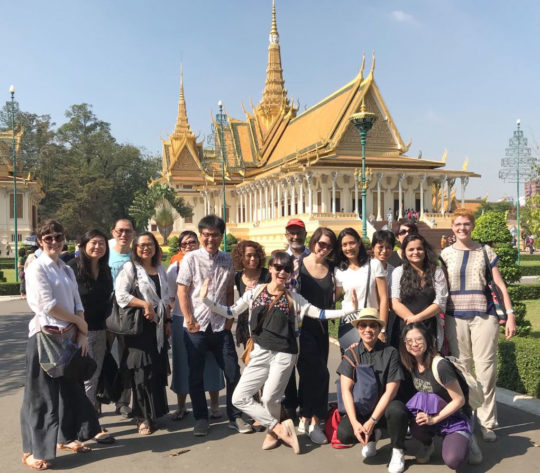by Chua Yi Wen & Yvonne Chan
The class of 2018 for Master of Arts in Asian Art Histories visited Phnom Penh this year for our study trip from 11-15 December 2017. Despite the Cambodian contemporary art scene being relatively young, it is rich, colourful and dynamic. Thanks to the careful curation and planning by our lecturer Clare Veal, we met people across the whole spectrum of the art scene, ranging from the artists to curators to founders of art collectives, art spaces and art archives. It was a fascinating window to the achievements, opportunities, development and challenges of the art community in Cambodia.
One highlight of the trip was a visit to the studio of Sopheap Pich. Sopheap Pich’s works have been exhibited internationally, including at Asia-Pacific Triennial of Contemporary Art (2009), Singapore Biennale (2011) and dOCUMENTA (13) (2012), and certainly ranks as one of the most established artists in Cambodia. Situated in the Chrouy Chongva district, the studio is a quiet sanctuary away from the hustle and bustle of the Phnom Penh. It was truly a privilege to meet Sopheap Pich who brought us around and shared insights to his works.
Another highlight was the visit to artist Tith Kanitha’s home studio. Kanitha’s work was featured in the recent SUNSHOWER exhibition in Tokyo. We enjoyed first hand preview of the works that she is creating for her upcoming solo show in Sa Sa Bassac, an art space in Phnom Penh which we also visited. We were really impressed with Kanitha’s passion and dedication. With her versatility and talent, she is definitely an artist to watch out for!
Cambodia is in the early stages of development in many aspects – infrastructure, old buildings making way for new, urbanisation and displacement of the marginalised communities. It is hence not surprising that Cambodian contemporary art has a socio- political angle. For example, Khvay Samnang, one of the founders of Sa Sa Art Project, combined performance art with photography and video to revealed the agony and frustration of a community affected by change and development.
It was inspiring to hear Vuth Lyno of Sa Sa Art Project, Moeng Meta of Ruong Kon Project, Dana Langlois of Java Cafe and Gallery, and Erin Gleeson of Sasa Bassac speak about their programmes, plans and visions for promoting art in their respective organisations. Through a combination of educational and outreach programmes, and provision of exhibition spaces, discussion platforms, artist residencies, they provide an interconnected network to develop art, and support artists in Cambodia.
In addition to art spaces, we also had the chance to visit popular tourist attractions like the Royal Palace and National Museum, both testament to the rich artistry, history and culture of Cambodia. The traditional dance performance by Natyarasa was also a window to its cultural legacy. An architecture tour of the urban spaces built in the sixties and seventies showed us the intertwining of architecture, dance and art in Cambodia.
One interesting highlight of the trip was the Bophana audiovisual resource centre which has an impressive archive of Cambodian films. The tragic history of Cambodia under the Khmer Rouge was shared most poignantly at the film screening at Bophana. Just a day earlier, we had visited the Tuol Sleng Genocide Museum. During the Khmer Rouge, it was said that more than ninety percent of artists and intellectuals were killed. It is against this backdrop that some thirty years later that the art community is re-building itself. With promising ground-up initiatives like Sa Sa Art Project, Phnom Penh, a city that has seen so much pain and suffering, teems with hopes. A new generation of artists born after the Khmer Rouge regime light up the future of a country ready to step out of its painful history. To borrow W H Auden’s words, “In the deserts of the heart, let the healing fountain start; In the prison of his days, teach the free man how to praise.” Despite all the challenges, art has and can do so much to help communities in Cambodia. We look forward to many more exciting works from Cambodian artists!
The trip a marked a culmination of more than seventy classes, numerous talks cum discussions and multiple hours of readings, research and essay-writing. Whilst we still have fifteen thousand words to go, it was a celebration of our new knowledge, new learnings and new friendships during the year. It was certainly a very productive week of learning, discovery and fun!


